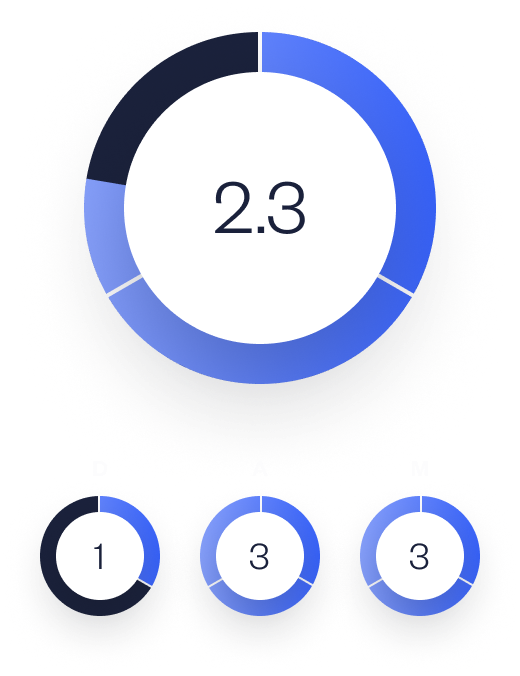Flow Efficiency
Reflects how well work moves from start to finish by measuring the amount of time spent in any stalled, interrupted, or blocked state.
ANALYSIS
The backbone diagnostic for Cycle Time. If work isn't being delivered at the speed you want, the next question is: Why not? Flow Efficiency surfaces which steps in your workflow need attention, and why. However, as with Cycle Time, it requires the right tooling to see.
Definition & Formula
(time in exception states / Cycle Time) * 100
Reflects how well work moves from start to finish by measuring the amount of time spent in any stalled, interrupted, or blocked state.
The Socratic view
The backbone diagnostic for Cycle Time. If work isn't being delivered at the speed you want, the next question is: Why not? Flow Efficiency surfaces which steps in your workflow need attention, and why. However, as with Cycle Time, it requires the right tooling to see.
Background
Flow Efficiency is a software engineering metric that originated from the Lean and Kanban frameworks. It has been widely used since the early 2000s as a way to measure and improve the efficiency of software development processes. The concept of Flow Efficiency is rooted in the idea of reducing waste and optimizing the flow of work from start to finish.
In Lean and Kanban, Flow Efficiency is seen as a key diagnostic tool for evaluating Cycle Time, which is the total time it takes for work to move through the entire process. By measuring the time spent in stalled, interrupted, or blocked states, Flow Efficiency provides insights into which steps in the workflow require attention and improvement. With the right tooling, teams can visualize and analyze Flow Efficiency to identify bottlenecks and optimize their software engineering processes.
Use cases
Flow Efficiency is commonly used by software engineering teams to monitor and improve their development processes. It is particularly useful for teams practicing Kanban or Lean methodologies. By tracking Flow Efficiency, teams can identify areas where work is getting stuck or delayed, allowing them to take corrective actions and improve overall productivity.
Software engineering managers and team leads often rely on Flow Efficiency to gain insights into the effectiveness of their team's workflow. It helps identify areas of improvement, such as reducing wait times, minimizing interruptions, and streamlining handoffs between team members. By consistently monitoring Flow Efficiency, teams can make data-driven decisions to optimize their processes and deliver work more efficiently.
Evaluating the metric
A good value for Flow Efficiency is typically high, indicating that work flows smoothly through the software engineering process with minimal interruptions or delays. A high Flow Efficiency percentage implies that a significant portion of the Cycle Time is spent in active work, resulting in faster delivery and increased productivity.
On the other hand, a low Flow Efficiency value suggests that work frequently gets stalled, interrupted, or blocked, leading to longer Cycle Times and decreased productivity. A low percentage indicates potential bottlenecks or inefficiencies in the workflow that need to be addressed.
Evaluating Flow Efficiency provides valuable insights into the effectiveness of a software engineering team. A good Flow Efficiency value indicates that the team has optimized their workflow and minimized waste, resulting in faster delivery and improved productivity. Conversely, a poor Flow Efficiency value highlights areas for improvement, allowing teams to focus on resolving bottlenecks and enhancing their overall efficiency.
